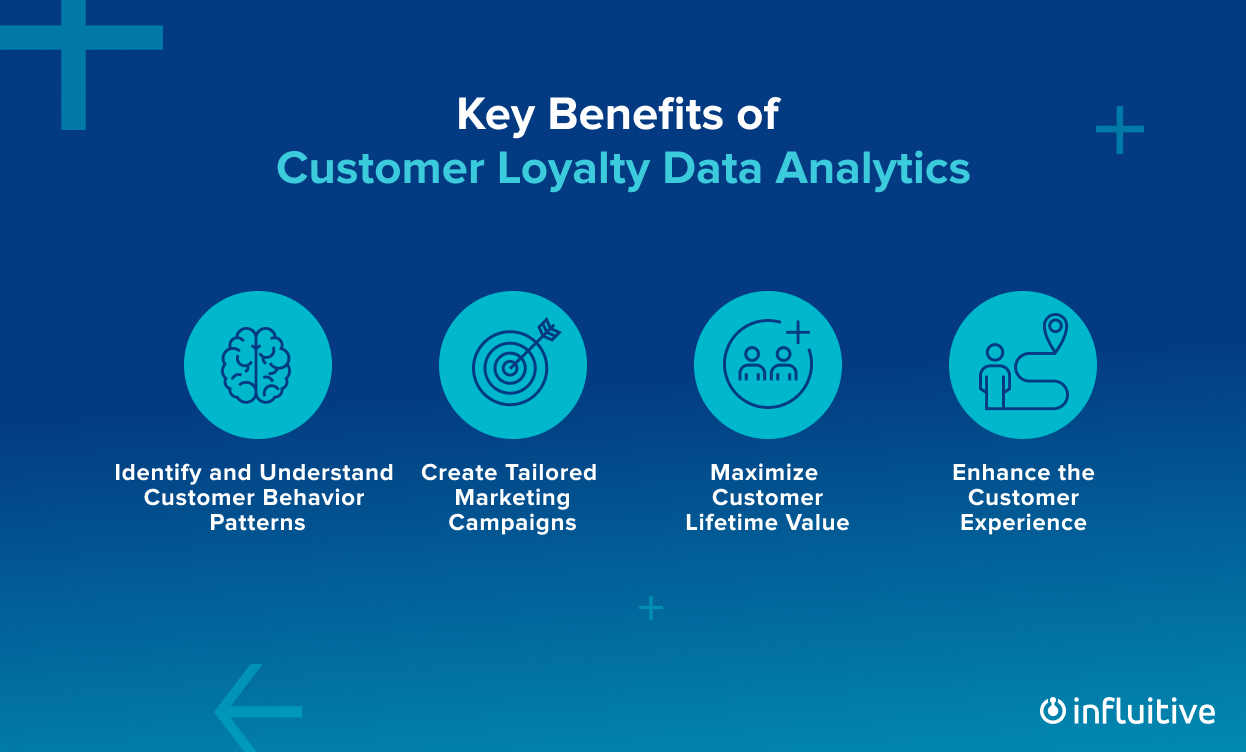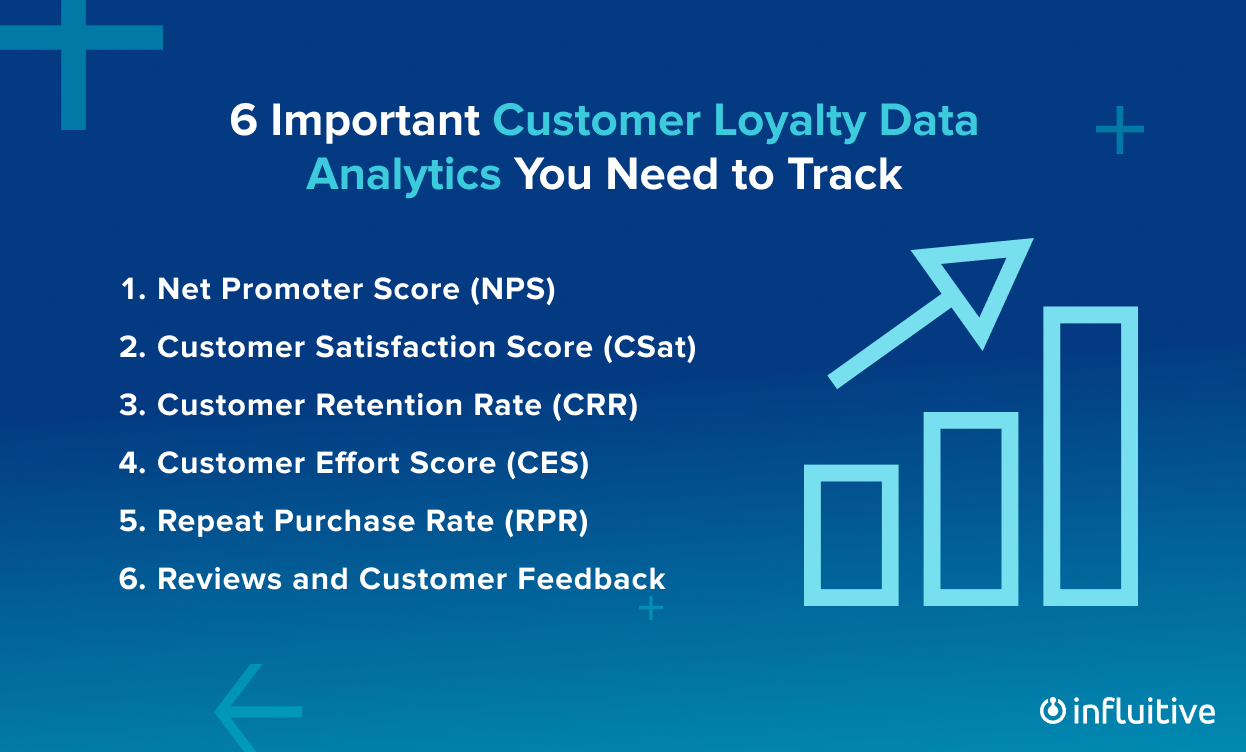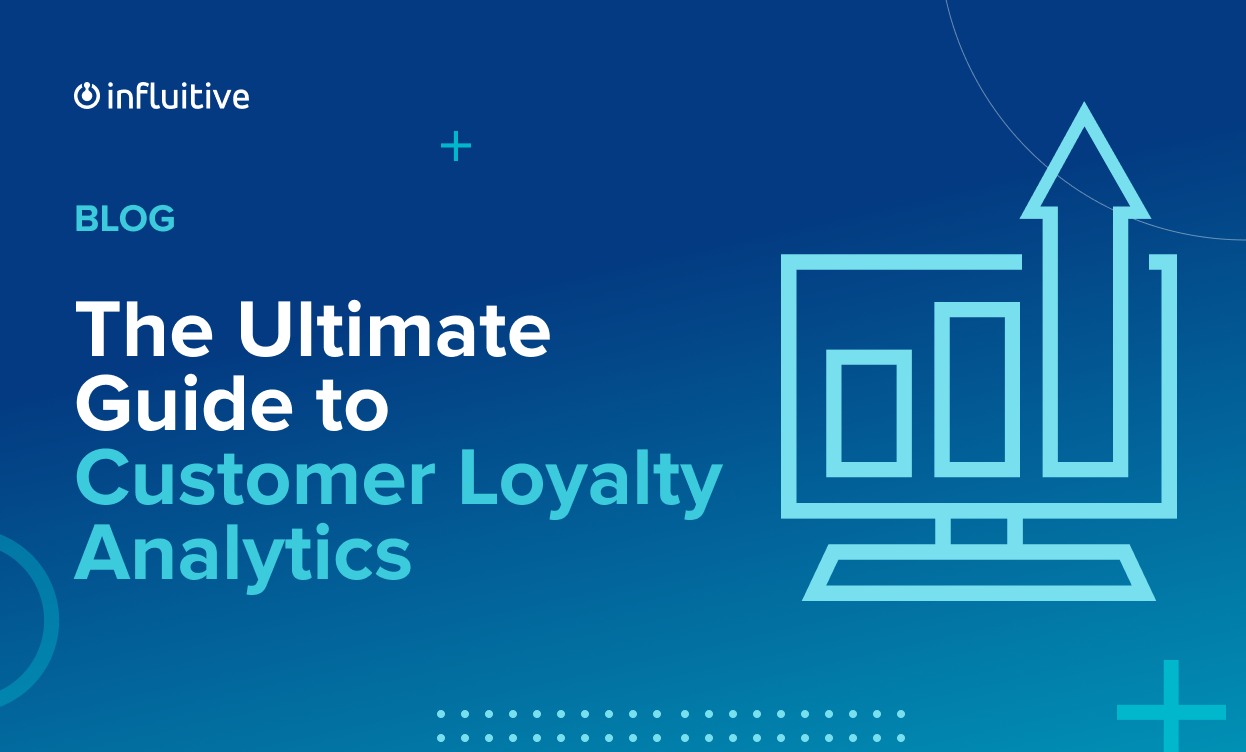Navigating the vast realm of marketing data can sometimes feel daunting. Amidst all the information, how can you distinguish between critical insights and mere distractions? The key lies in focusing on customer loyalty.
Understanding customer loyalty analytics is more than just a passing trend—it offers valuable insight into the heart of your audience. Interpreting this data makes it possible to go beyond numbers and understand the sentiments and preferences they represent.
In this article, we’ll explore the concept of customer loyalty analytics and discuss how it can transform your approach to fostering enduring customer relationships. We’ll also highlight effective strategies to enhance customer engagement and loyalty.
What Is Customer Loyalty?
Customer loyalty is about more than repetitive purchases. It represents a consistent preference for one brand over its competitors, stemming from a genuine bond the customer establishes with the brand.
Loyal customers typically:
- Consistently opt for your products
- Engage with your brand across various platforms
- Remain unaffected by competitor offerings
- Actively promote and endorse your brand
- Provide constructive feedback to refine your services
In the competitive realm of today’s marketing, recognizing and nurturing this loyalty is crucial for sustained success.
A customer loyalty program typically offers various motivators, such as points, exclusive experiences, status, or merchandise, as a reward for loyal behaviors, thereby increasing the effectiveness of customer attraction, growth, and retention. Loyalty programs will reward both transactional behaviors and non-purchase actions, such as acts of advocacy, social shares, or survey completion.
Customer Loyalty vs. Retention
At first glance, loyalty and retention may seem interchangeable. However, although both metrics track returning customers, they measure them differently. Retention counts the number of repeat purchases by a customer, while loyalty measures a customer’s emotional and psychological attachment to a brand.
While both are essential metrics, loyalty holds more intrinsic value by identifying your brand advocates.
What Is Customer Loyalty Analytics?
Customer loyalty analytics offers a comprehensive look into why loyal customers choose to stay with a brand. Think of it as piecing together a puzzle—identifying the factors that compel their allegiance. Is it unparalleled service? Appealing loyalty incentives? Or maybe a genuine bond with the product?
A brand can identify customer commitment using specific metrics that analyze customer behavior and interactions. This data can help companies determine what resonates deeply with their audiences and identify their biggest supporters. Knowing who your supporters are is key to building a customer advocacy program, a powerful tool for increasing sales and strengthening customer relationships.
What Are the Benefits of Customer Loyalty Data Analytics?

Given the many choices in today’s market, why zoom in on customer loyalty data? Isn’t conventional marketing data enough?
General marketing data provides a broad perspective, but customer loyalty data analytics delivers precise and actionable insights. By immersing in this data, you can:
Identify and understand customer behavior patterns
Customer loyalty data analytics offers insights into purchase behaviors, product preferences, and feedback. Recognizing these patterns allows businesses to anticipate customer needs and promptly address concerns. It shifts the dynamic from mere transactional interactions to building genuine relationships.
Create tailored marketing campaigns
Deeply understanding your loyal customers can help you design more effective customer marketing campaigns. Instead of broad, one-size-fits-all promotions, customer loyalty data makes it possible to create personalized offers. By addressing loyal customers’ specific needs and desires, these campaigns result in better engagement and higher conversion rates.
Maximize customer lifetime value
Loyal customers don’t just purchase once; they return often and spend more over time. If you identify what drives their loyalty, you can focus on enhancing those elements. This approach encourages repeated purchases and increases the amount customers are willing to spend, increasing their lifetime value.
Enhance the customer experience
An outstanding customer experience sets brands apart. With loyalty data analytics, you can determine what your loyal customers value the most, whether it’s efficient service, quality products, or personalization. By consistently meeting and exceeding these expectations, businesses can ensure customers return and recommend their brand.
Gathering Customer Loyalty Analytics
Understanding your customers involves more than just analyzing sales figures. Various factors shape customer loyalty, each offering a unique window into your customers’ experience and relationship with your brand. A well-selected set of customer advocacy KPIs and metrics is essential to effectively gauge these factors.
Basic quantitative data points, like the number of purchases and website visits, give an initial overview of customer interaction. Behavioral data, like engagement frequency or time between purchases, reveals their habits and patterns.
In contrast, qualitative data—derived from feedback, reviews, and surveys—dives deeper. Reviews, for instance, can reveal a customer’s overall satisfaction, while surveys might indicate if they’d recommend your brand or plan to shop again. Such feedback is invaluable, highlighting areas that please customers and others that might need attention.
6 Important Customer Loyalty Data Analytics You Need to Track

Certain metrics provide deeper insights into customer behavior and preferences. Understanding and leveraging these metrics can help you create effective advocate marketing programs that significantly improve the brand-customer relationship.
Here are six essential metrics to track:
1. Net Promoter Score (NPS)
The Net Promoter Score measures customer loyalty and the potential for brand advocacy. A high NPS signifies strong customer loyalty and a robust likelihood of referrals. Identifying where your customers stand helps businesses differentiate between their most loyal customers, those on the fence, and the least satisfied. A focus on this metric can help tailor engagement strategies more effectively.
How to Measure: Ask customers, “On a scale of 0 to 10, how likely are you to recommend our brand to others?” Classify the responses into Detractors (0-6), Passives (7-8), and Promoters (9-10). Calculate NPS using the formula:
NPS = % Promoters – % Detractors
2. Customer Satisfaction Score (CSat)
CSat provides businesses with a quick insight into customers’ satisfaction after a specific interaction. A higher CSat denotes a positive experience, while a lower one can indicate potential issues that need addressing. By regularly monitoring this score, brands can proactively enhance their customer experience.
How to Measure: Post-interaction, ask customers to rate their satisfaction on a scale from 1 to 5. Then calculate the CSat as an average:
CSat = (Number of satisfied customers / Total survey respondents) x 100
3. Customer Retention Rate (CRR)
Customer retention rates offer insights into a brand’s ability to maintain its customer base over time. A consistent and high CRR signifies that a business delivers constant value, making customers want to stay with them. Improving this rate can significantly boost a brand’s bottom line.
How to Measure: Use the following formula:
CRR = [(Number of customers at the end of a period – New customers acquired during that period) / Number of customers at the start of the period] x 100
4. Customer Effort Score (CES)
The effort score evaluates the simplicity of customer interactions with a brand. An effortless experience often translates to higher customer satisfaction and loyalty. If interactions are deemed complicated or time-consuming, it provides an opportunity for businesses to simplify and improve.
How to Measure: After an interaction, ask customers, “On a scale from 1 to 7, how easy was it to interact with us?” A lower score indicates a more difficult interaction.
5. Repeat Purchase Rate (RPR)
The RPR, sometimes called the Repeat Customer Rate, measures how often customers return to purchase more products. A high RPR indicates sustained trust in the brand and satisfaction with its offerings. Regularly monitoring and improving this rate can lead to increased revenue.
How to Measure: Calculate using this equation:
RPR = (Number of returning customers / Total number of customers) x 100
6. Reviews and customer feedback
Direct feedback in the form of reviews or comments is a treasure trove of insights for brands. These reviews, whether positive or negative, are genuine reflections of customer sentiment and can guide a brand’s strategy and improvements.
How to Measure: Employ qualitative analysis of online reviews, feedback forms, and direct customer communications to gauge sentiments and pinpoint focus areas.
Best Practices for Using Customer Loyalty Analytics Data
Merely collecting data doesn’t drive growth; you need to act on it. Customer loyalty analytics can reveal insights about customer behavior and preferences. When harnessed correctly, these insights can deepen relationships and spur business growth.
Here’s a practical guide to maximizing this invaluable data:
Let customer retention guide your program
Remember, while acquiring new customers is vital, retaining existing ones is cost-effective and often leads to greater profitability. Dive into your loyalty data to determine why customers stay, then develop strategies to strengthen those reasons. If your data reveals a preference for personalized experiences, for instance, modify your loyalty program to feature tailored incentives and rewards.
Example: A fitness apparel store finds that customers who make a second purchase within three months usually stay loyal for an extended period. Acting on this, they roll out a 10% discount for customers making their second purchase within this window, reinforcing repeat buying behavior.
Discover how Sage tapped into passionate supporters to rally other members and achieve a consistent 35% engagement in their advocacy program.
Segment your customers
Customers differ in habits and desires. Segmenting them based on purchase patterns and preferences allows for targeted interactions. Recognize which segments are most valuable, ready to churn, or primed for upselling. With this, you can introduce bespoke offers and communication strategies to engage them effectively.
Example: An eBook platform realizes a segment predominantly purchases mystery novels. They then create a “Mystery Mondays” promotion, offering discounts on selected mystery titles every Monday, and target an email campaign directed at that segment.
Create personas based on customer needs
Interpreting loyalty data helps you understand customers’ unique needs, pain points, and desires. Use this information to craft detailed personas representative of various customer groups. Aligning your products and marketing strategies to these personas ensures better resonance and increased satisfaction.
Example: An online grocery store identifies a “Health-conscious Hannah” persona. They introduce a “Healthy Picks” section featuring curated organic and low-calorie products, catering directly to Hannah’s preferences.
Check out how Rubrik used Influitive to lean into its niche audience and build a thriving and rewarding customer community.
Map out the customer journey
From the first touch to loyal patronage, understanding the customer journey is crucial. Loyalty analytics make it easy to trace this path by identifying key touchpoints, bottlenecks, and moments of delight. Refining these steps ensures a seamless experience, increasing chances of customer retention and repeat purchases.
Example: A software-as-a-service company observes users frequently drop off at the payment stage. To mitigate this, they reinforce payment security measures, offer multiple payment options, and introduce a live chat support feature to increase user confidence.
Track program effectiveness
Your loyalty program isn’t static—it should evolve with customer preferences and market trends. Track your loyalty initiatives regularly. If certain features aren’t resonating, it’s a signal to refine or replace them. Adapting to changing preferences and trends ensures the program remains relevant and enticing.
Example: A cosmetics brand finds that while their points-based rewards system is popular, members desire more exclusive experiences. They introduce “Members-only Masterclasses,” where customers can exchange points for a virtual beauty class.
Discover how VMware tripled customer engagement by launching improved loyalty programs with Influitive.
Master Customer Loyalty Data Analytics With Influitive
Loyalty metrics aren’t just numbers—they’re the voice of your customers, guiding you to make impactful decisions. These insights help curate memorable experiences and ensure customers come back repeatedly. But to truly harness this potential, you need the right partner. Enter Influitive.
With Influitive, you’re not just accessing data; you’re unlocking narratives that shape the future of your brand. Learn more about how we redefine customer loyalty analytics or schedule a demo today!










































